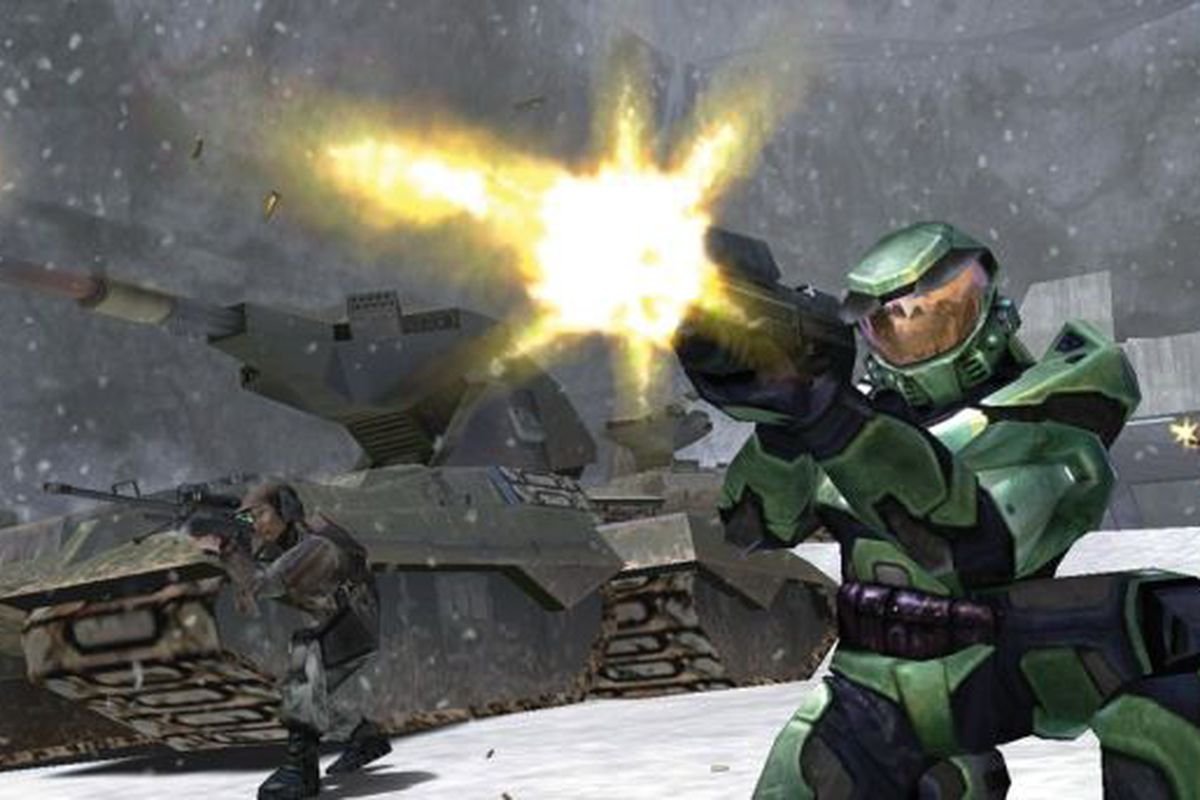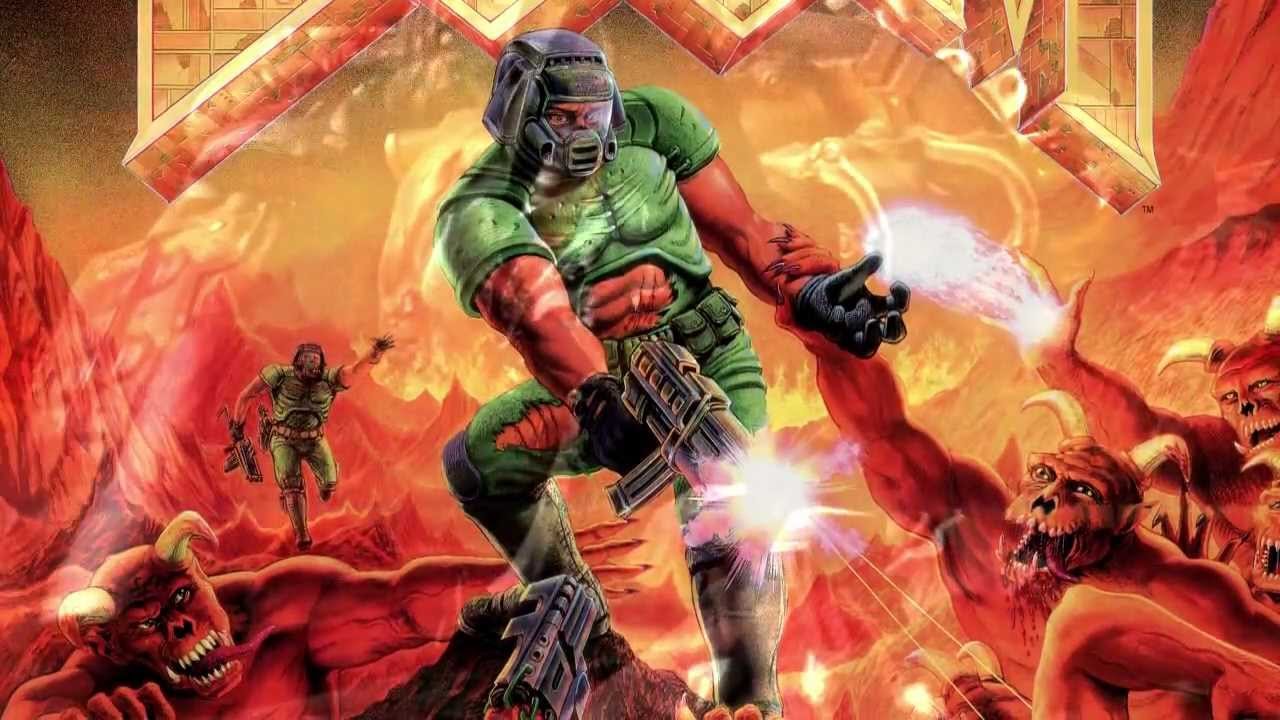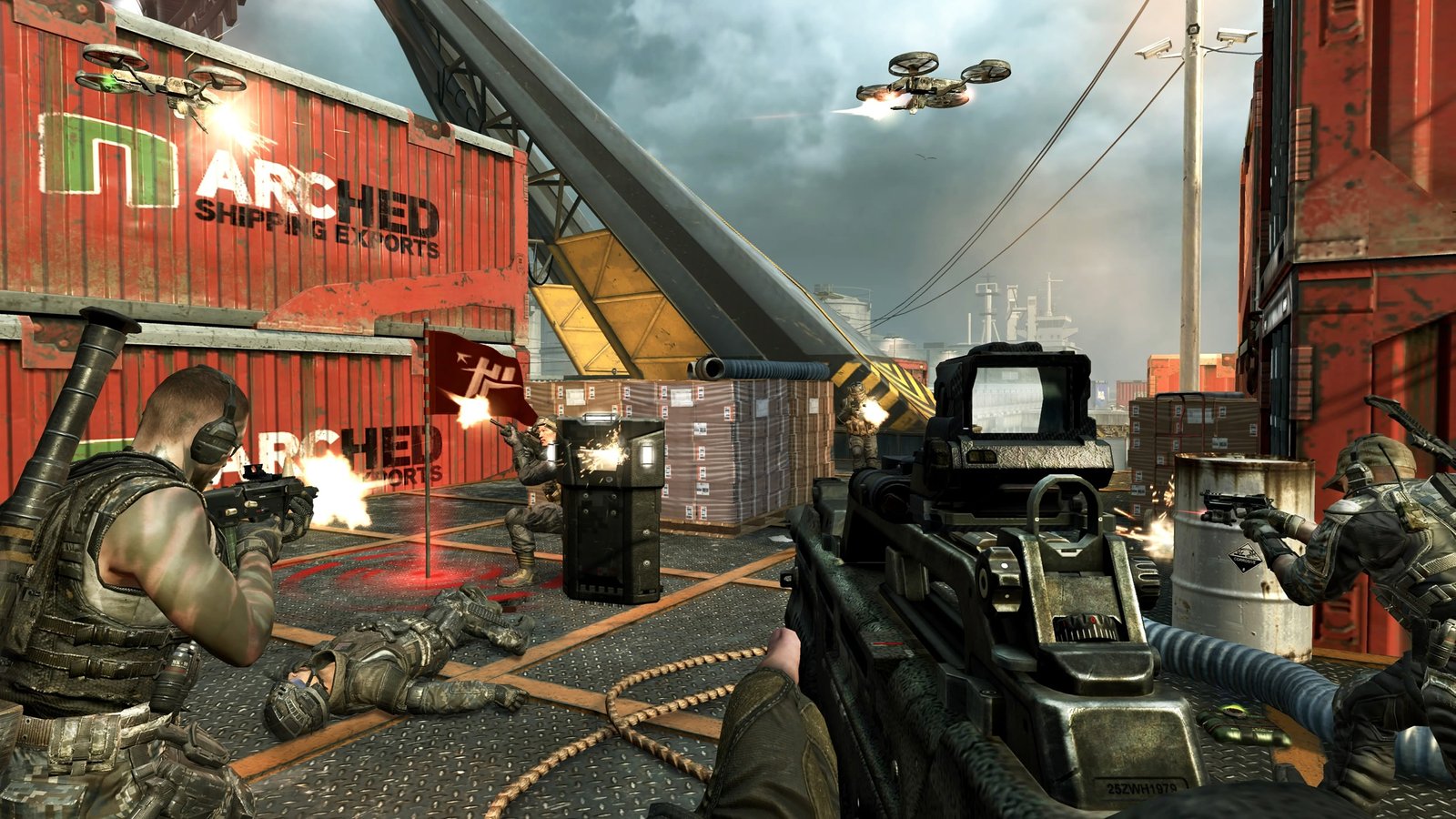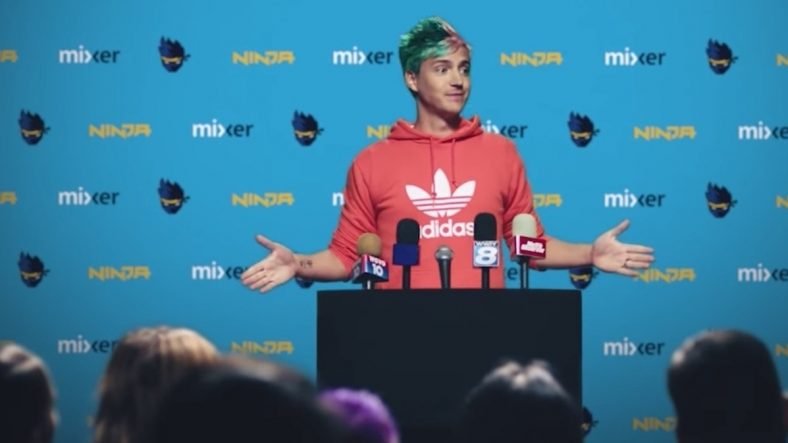
There is a reason why games like Call of Duty, Halo, and Battlefield still bust out the sales and active gaming charts. First-person shooters are an amazing part of gaming history and have a one of a kind story so in today’s feature we talk about The Insane Popularity Of First Person Shooters.
The Popularity of First-Person Shooters
Lock and Load
A look at the charts of the best-selling games in recent years will bring those interested to many repetitive household names dominating the charts such as Call of Duty, Battlefield, and Counter-strike. Call of Duty has particularly been dominating the competition of first-person shooter videogames since the dawn of the PS4/Xbox One console era.
It was also extremely popular in the previous generation as well, with the gaming sensation Black Ops 2 setting the standard for multiplayer shooters by reaching sales of more than 29 million copies sold. The journey of first-person shooters to have a ubiquitous place in the gaming industry is a rather interesting one. It all began in 1992, with college dropout John Carmack and five of his colleagues at id Software working hard on the concept of a new videogame.
This game would combine Wolfenstein’s 3D environment with fast-paced and incredibly brutal combat. This game would go on to be called Doom. Not only would the game shoot to critical acclaim at the time but it would go on to be the most installed piece of software on a PC.
The game, being an ancestor to various first-person shooter games, was an incredible landmark. It had inspired the subgenre “Doom-clone” and it had also embraced its throbbing modding community that is still relevant to this very day.
Soon, various mods would be shared of Doom as shareware; this could be anything from Pokémon to Batman mods. The game enjoyed a much-welcomed and highly expected reboot in 2016 which in turn inspired a sequel titled Doom: Eternal. Perhaps the triumphant success of the game was not only the revolutionary game itself but how id Software had embraced the community of Doom and nourished it, then watched it grow.
Combat Evolved
Soon, multiplayer elements would be added to first-person shooters, not just to Doom but it would inspire another game made by id Software to do the same. This was Quake and it added a slew of new things to the table, the game included an all-new element of verticality which was absent from the former (Doom), in contrast to Doom’s sci-fi setting in hell, Quake featured a high-fantasy universe with its own lore. While still appearing to be medieval, it had broadswords and mythological monsters on one end with computers and teleporters on the other that had players boost, dash and jump over enemies as well as other players.
Quake laid the foundation stone of what would eventually move on to become a multiplayer first-person shooter experience. A tournament was also held in 1997 for Quake that had attracted more than 2,000 participants in what could be interpreted as the world’s first e-sports event.
The staff at id Software was clearly far ahead of its time and they were already making headlines at this time. Around this time, while the story was not that heavily emphasized in first-person shooters, another game would arrive on the scene that would go by the name of Half-life and would even inspire a sequel. This game was pioneered by Gabe Newell of Microsoft fame at the time and the staff at Valve. The game introduced yet another fantasy setting pretty much like Doom and Quake but was a far more narrative-focused experience.
If the game to anyone of its loyal players “played” like a novel would, it should be noted that Marc Laidlaw was behind the story writing of the game. Marc was a science fiction and horror novelist, so this very likely the reason why.
The game would not only be immensely popular to inspire a plethora of mods, but it would be the main driving force to release a sequel appropriately titled “Half-Life 2”. The fans were overjoyed and enthralled by both the games, but they are eagerly waiting for another installment in the franchise which valve has remained mute on.
Half-life 2 was released in 2004, so it has been a good sixteen years and the fans are still clinging onto hope for even as much as innuendo that a sequel might be in the works, but there is no relief in sight.
Around this time, a very popular movie series would go on to release their very own FPS videogame on the Nintendo 64, this was, you guessed it, Goldeneye 007 that starred the Pierce Brosnan’s likeness as the protagonist. It would have the players play through major parts of the film reimagined as a videogame with 3D polygons instead of real actors.
The game featured a variety of cheat codes and levels to create different experiences along with a multiplayer mode. While the Nintendo 64’s controller left a lot to be desired compared to a retrospective approach, the game proved to be ground-breaking nonetheless.
Dawn of the New Age
Moving onto the modern era, first-person shooters become more competitive with Halo 2. It is often credited with pioneering the first modern style of playing a multiplayer FPS game through a competitive lens. Unlike Doom or Quake, this game featured no game-breaking power-ups or rocket jumps for that matter.
Combat was very much “boots on the grounds” so know-how of the maps and having the appropriate loadout with the right game plan in mind was considered the key to success. The game was also the first commercially successful FPS game that allowed broadband gameplay via Xbox Live, so as a result the game was accordingly balanced in such a way that it necessitated a comprehensive approach to skill and strategy.
However, unlike in Call of Duty’s create-a-class system, players started with generic weapons and would have to find other weapons scattered across the map. Another defining feature of the game was skill-based matchmaking to keep things (apparently) fair.
The game had a rank that would rise or fall depending on how one would play. If the player continuously lost matches, then the game would not brush that off with a “strength and honor” medal as seen in Call of Duty. It would tell you that you had in fact gotten worse.
This era would also see the rise of many unfair tactics such as camping, spawn trapping, swipe-sniping, etc. that could begin by a mere advantage taken of the situation to a downright foul play.
Let us move on to the current era of first-person shooters with titles such as Call of Duty and Battlefield that are a staple of almost any gamer’s collection these days. In a gradual change, largely inspired by Steven Spielberg’s Saving Private Ryan, first-person shooters shifted from their high-fantasy sci-fi settings to realistic ones.
These games emphasized realism more than having a science fiction setting, they maintained typical first-person videogame shooter elements but they aimed to be “more” realistic videogames packed with real-life weapons similar to IGI and Counterstrike that had gritty storylines, had players question their choices and had a various heartbreaking setback over the course of the game’s storyline.
One thing important to note is that Maria Konnikova writes in her article “Why Gamers Can’t Stop Playing First-Person Shooters” that “The more realistic the game becomes—technological advances have made the original Doom seem quaint compared with newer war simulators, like the Call of Duty and the Battlefield series—the easier it is to lose your own identity in it.” This is largely because not much creativity and imagination is stimulated by realistic settings, especially with the place of terrorism and other global tensions in a post-9/11 world; the modern-day FPS games seek to replicate that in an attempt to engage the player.
That does not mean that this archetype of videogames fails to innovate, in fact, they do. The Battlefield: Bad Company series introduced a fully destroyable environment whereas Call of Duty and Rainbow Six Siege refined the multiplayer experience and introduced e-sports in a way that someone from the early 2000s could have never imagined before, complete with tournaments that have proper e-sports teams like FaZe, Cloud 9, and OpTic Gaming competing for extravagant prizes that are easily in millions of US Dollars and are bound by the rules of the governing bodies of e-sports.
These games would feature a separate “ranked” mode for those interested in a far more competitive style of gameplay and a “non-ranked” one for those that consider ranked modes to be too extreme and see gaming as a leisure-based pastime. Benefitting from modern technology, these games feature updates and downloadable content that contain gigabytes of content to iron out issues and even introduce brand-new features to keep gamer’s entertained with new incentives to keep playing.
The journey of first-person shooters is a very interesting and eventful one, how the playing field will change (no pun intended) can be anyone’s guess, will we still see the same gritty rhetoric for the next generation of consoles? Will our games become solely a games-as-a-service model? Or perhaps will we return to a sci-fi setting once again like in the Advanced Warfare and Black Ops 3 era? Maybe we might see something new entirely, who knows? The bottom line is those first-person shooters are very much alive and kicking, they are definitely here to stay will bring in the cheddar for various large companies that are able to fund such AAA projects and thus continue to make shareholders rich.
First-person shooters have come along way and have contributed way too much to the world of gaming through many franchises, trendsetting games, and fan-favorite professional athletes















